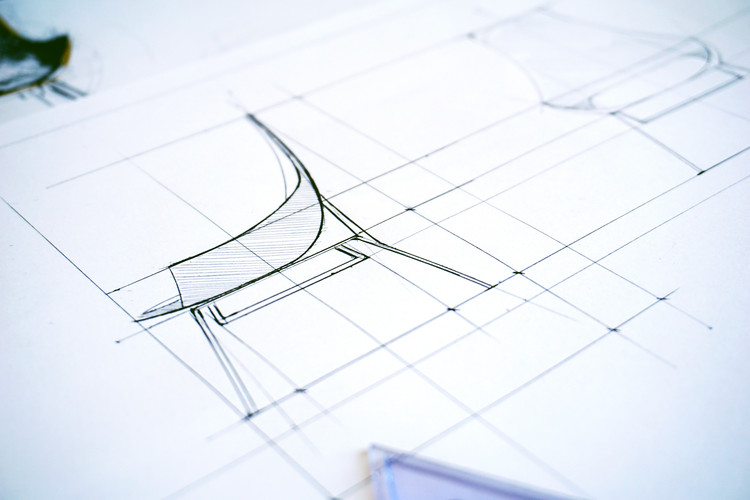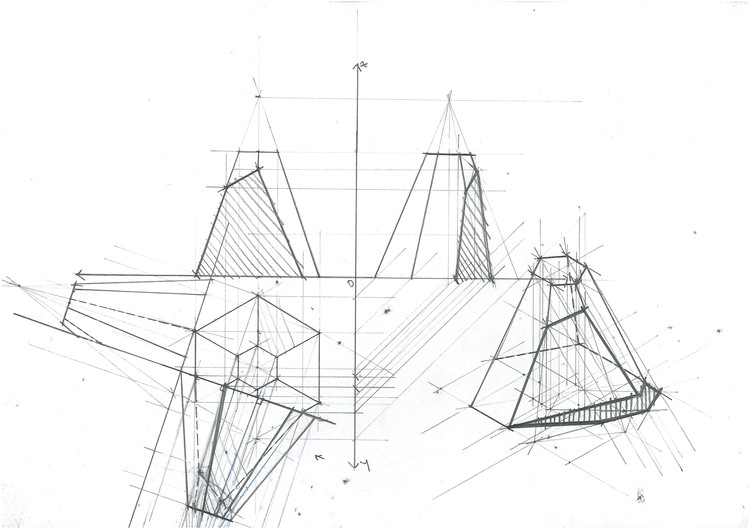Chapter 12 Project Technical Drawing 101 With Autocad

The black sheep of all architectural drawing has got to be technical drawing. Everybody loves drawing perspectives, sketches —you know the creative, interesting and expressive part of architectural drawing. But what about the aspects of drawing: the technical, logical, rational part? It might not be as sexy as freehand drawing, but it is just as important.
If you don't know proper technical drawing skills it will show in your work; your perspectives will look 'less smart' and badly proportioned and your designs will lack consistency. So in order to make technical drawings look less cold and more approachable, I'm sharing the best 20 technical drawing tips I've come across.

These technical drawing tips might destroy your preconceived notions regarding technical drawing, but they will help you befriend the beast (and also geta lot better at drawing axonometrics, sections, plans, and even descriptive geometry). So sit back, relax, and get a pen and paper to take notes.
.jpg?1519147130)
1. Start seeing technical drawing as important as freehand drawing.
The natural tendency is to completely ignore technical drawing. I suggest that you see it for what it is and start allocating several hours per week to getting better at it! When you get better at technical work, you will improve your overall drawing and design skills.
2. Always clean your triangles and drawing board to keep the smudging to a minimum.
A big no-no for achieving great technical drawings is smudging the sheet and making your drawings look messy and clumsy. You can easily avoid this by always cleaning your triangles.

3. Cover your triangles in paper scotch tape – that is going to reduce smudging as well.
Paper scotch tape will remove most grime from your drawing sheet; just remember to change it from time to time. This technique works very well with tip #2.
4. Construct your technical drawings using an HB pencil.
HB gives enough clarity while keeping smudging to a minimum. Use that to your advantage! You can harden the construction lines later using a softer pencil (2B+).

5. See the virtue in patience. Don't lose your cool when faced with challenging technical drawings.
Technical drawing is famous (or infamous) for being a brain twister. Accept this upfront—trust me, that's going to save you a lot of hassle and heartache later on. You'll have to do this for a while until you get used to it.
6. Start seeing the beauty in descriptive geometry… and practice descriptive geometry each and every day.
Descriptive Geometry is notorious for being the hardest of all technical drawing types. However, you can understand it and master it with enough practice. Constant practice will get you comfortable with descriptive geometry. Want a quick way to begin? Try this free lesson from my course 'Technical Drawing 101'. It will teach you everything you need to draw a complex isometric axo with constructed cast shadows.

7. Commit to becoming so excellent at technical drawings that you're able to outsource any part of your designs to drawing them on the drafting board.
This is a stage in itself; once you cross this mental bridge, you will start being less tense about technical drawing and actually start enjoying it!
8. Get a proper A2-A1-A0 drafting board. Stop it with the small A4-A3 drawings.
You know the stereotypical image of the architect working in front of a drafting board? Guess what—you need to become like that. Get the proper drawing tools in order to draw large drawings on a proper-sized drafting board.

9. Do a 30-day technical drawing challenge. (No excuses!)
Chip away at technical drawing every day for 30 days in a row. Your progress will be obvious! It might get frustrating after day #17, but don't lose faith!

10. Use dotted lines to show the back edges of your drawings.
This way you keep your work tidy and clean. And, as a bonus, you make it look smart and elegant as well. Different line types add different kinds of information. And thatlooks good.

11. Understand the principles and thinking behind sections.
Understanding sections is 90% about developing your 3-dimensional vision. This will make more sense as you practice it.
The first step is understanding how to correctly draw sections.

12. Know at least three different types of axonometrics.
There are several types of axonometric drawings out there that show the same volume at slightly different angles. I've prepared a video for you here, so you can get started with drawing different types of axos ASAP.
13. Know what a dodecahedron is and how to draw it in triple projection and axonometric.
There are several "simple" volumes out there that you need to know how to draw: the dodecahedron is the most approachable of the lot. Start with a triple projection, then axonometric.

14. Master triple projections.
A triple projection shows a volume from a frontal, top and side view. If you've used any computer software, you already are familiar with these concepts from the front, top and side viewport. If you know how to draw the volume line by line, then you're much better off.
15. Learn to solve 100 Descriptive Geometry Problems
You want to become smarter, more disciplined and faster in your thinking as an architect or designer? Try the '100 descriptive geometry problems' challenge and we'll talk after that.

16. Learn to draw custom ellipses in all types of axonometric drawings.
Ellipses are notoriously hard to draw in a normal axonometrics, so drawing custom ones will help you get better and better.

17. Develop a passion for solving any descriptive geometry problem you come across.
Most architects just run away from descriptive geometry (Don't believe me? Try asking one to draw a simple dodecahedron sitting on its spatial diagonal). You need to do what everyone else isn't doing and become genuinely passionate about learning how to do it yourself.
Here's a free lesson I want you to try out. It is on drawing a complex axonometric in multiple coordinate systems and will probably melt your brain (it is the most difficult lesson from my beginner course on architectural technical drawing).

18. Know how to draw all the standard primitives: cube, pyramid, cylinder, cone, tetrahedron etc.
Obviously drawing them in triple projection and different types of axonometrics is best. How do you start with that? Pick a standard cube with the length of 4 cm. Go draw a triple projection and 3 different axos of it.
19. Know how to draw all standard geometrical shapes: square, circle, pentagon, hexagon.
Get started with planar geometry. You will use this later for facade and planar studies. Also, as a tip: knowing multiple types of geometry will help you get proportions right for all your designs.

20. Ink all your best drawings – whether they are sections, technical details, artistic axonometrics etc.
Inking drawings (tracing over them with a liner instead of just leaving them in standard pencil) is the best option out there for preserving them. How do you apply these tips to get better results with your architectural drawing? To get started asap with technical drawing and get consistent results I recommend taking my course on technical drawing called 'Technical Drawing 101'. It will get you from being a complete "noobie" with zero spatial vision to being able to draw complex axonometrics, cast shadows and master other architectural technical drawings.
Get 'Technical Drawing 101' with 80% discount here.
Cite: Michael Neatu. "20 Technical Architecture Drawing Tips" 21 Feb 2018. ArchDaily. Accessed . <https://www.archdaily.com/889367/20-technical-architecture-drawing-tips> ISSN 0719-8884
Source: https://www.archdaily.com/889367/20-technical-architecture-drawing-tips
0 Response to "Chapter 12 Project Technical Drawing 101 With Autocad"
Post a Comment